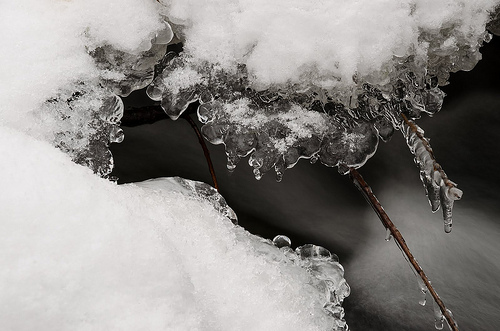Happy New Year from all of us here at HRWC. We hope 2014 brings you many opportunities to convene with the rivers and lakes of the watershed. To start the year off right, consider heading to Proud Lake Recreation Area for some winter river recreation. This edition of News to Us also shares stories on the dioxane contamination in Ann Arbor’s groundwater, an Ypsilanti riverfront development, a new State-level strategy on aquatic invasives, reports of another major waterbird die-off event and how water loss from pipes is affecting your water bill.

Heavner Canoe, Kayak Rental To Host Outdoor Open House on New Year’s Day
Bundle up and get down to the river tomorrow to kick off the new year! Heavner Canoe, the Department of Natural Resources and Solar Club are hosting an event at Proud Lake Recreation Area. Snow shoe, kayak or canoe your way into 2014.
Michigan DEQ could set higher standards for dioxane pollution cleanup in 2014 The Department of Environmental Quality is considering higher State-level standards for dioxane contamination. This is welcome news for Ann Arbor residents who have been advocating for a better cleanup of a dioxane plume spreading in the groundwater in the Wagner Road area and moving toward the Huron River. The toxic plume is the result of contamination from the Pall Life Sciences medical manufacturing facility. HRWC supports stricter standards for the clean up of this toxin.
Smaller $12M Eastside Recreation Center proposed to accommodate future Water Street developments Ypsilanti may be home to a new recreation center along the Huron River. The proposed community center is a cornerstone of the Automotive Heritage Trail District being created by local partners to brand this section of the Huron River and border to border trail from Peninsular Park to the historic Ford Lake Dam.
(Detroit News) Michigan agencies step up invasive species fight Michigan state agencies now have a shared strategy to help fight the spread of aquatic invasive species. Implementation of the strategy will begin in earnest with coordinated early detection and rapid response. The strategy also involves public education as a means of identifying new infestations early.
Paying more to lose water by the minute Volumes of water are lost from leaking pipes in our water systems. Aging infrastructure and the absence of standardized required water audits have led to the loss of approximately 66.5 billion gallons of water annually in the Great Lakes region. Water loss leads to revenue loss for utilities which results in increased water rates for consumers.
Botulism Bacteria Blamed for Deaths of Waterbirds on Lake Ontario Another significant Great Lakes waterbird die-off event is occurring now, this time in Lake Ontario. A complex mix of factors, including nutrient pollution and algal blooms, lead to the botulism outbreaks that are killing loons and other water birds at alarming rates.



